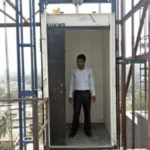Professional success in contemporary engineering demands consistent education and skill improvement because the field continues to evolve. Professionals in engineering need structural design courses as part of their development because they teach specialized knowledge that could guide their career decisions. The challenge in today’s competitive job market requires both fresh graduates and seasoned professionals to develop their structural design capabilities as they will gain substantial professional benefits.
The Development of Modern Engineering’s Structural Design
Throughout the years, structural design has experienced substantial change. What formerly mostly depended on physical models and laborious computations has embraced digital innovation, altering the way engineers plan, evaluate, and carry out projects. This progression is addressed in contemporary structural design courses, which close the gap between cutting-edge technological applications and conventional engineering principles.
Making structures that are secure, effective, and profitable is still the key objective. However, the methods and tools have significantly improved. Supported by modern advanced software, structural engineers conduct highly detailed structural simulations which produce precise predictions for diverse response scenarios.
Engineers develop theoretical knowledge and work-related practical abilities through their extensive structural design training which allows them to work on many different projects. Specialist online engineering courses provide students with foundational concepts that create excellent solutions for engineering problems across residential buildings and commercial complexes and bridge construction and industrial facilities.
Thinking Analytically
Fundamentally, structural design teaches the intellect to approach complicated issues methodically. Students gain the ability to evaluate forces and loads, deconstruct complex structural systems into manageable parts, and choose the best design solutions. Engineers gain from this analytical approach in every facet of their work, making it second nature.
The thorough analysis needed for structural engineering improves one’s capacity for spatial imagery and mathematical reasoning. Students’ problem-solving skills improve as they gain a deeper grasp of how forces interact in three-dimensional space through work on beam calculations, column design, and connecting details.
Proficiency with Technical Software
Advanced computational technologies are essential to modern structural engineering. The majority of thorough structural design courses incorporate instruction on the industry-standard civil design software. Engineers who are proficient with these digital technologies have a big edge in the job, where precision and efficiency are crucial.
Engineers can conduct intricate analyses using industry-standard software that would be impossible or prohibitive to do with just manual computations. These digital and online techniques, which range from building information modeling to finite element analysis, enable more accurate designs and improved structural performance prediction.
The online market provides a range of software solutions at varying price ranges; the pricing of ETABS software in India is especially affordable when compared to costs outside. More engineers are now able to use sophisticated tools in their daily work thanks to this accessibility, which has democratized advanced design skills.
Regulatory Knowledge and Code Compliance
The complicated terrain of building codes and regulatory regulations is something that every structural engineer must traverse. Good structural design courses educate students how to correctly interpret and implement these requirements by covering pertinent codes in great detail.
Engineers are better equipped to produce designs that meet or surpass minimal standards when they are aware of the code rules for various load combinations, material qualities, and safety considerations. When handling approval procedures and inspections, this information is extremely helpful and could prevent expensive delays and revisions in projects.
Connecting Theory and Practice in the Teaching of Structural Engineering
Emphasizing practical application is one of the most beneficial features of well-designed structural engineering courses. Although academic underpinnings are crucial, what sets great engineers apart is their capacity to apply this knowledge in practical situations.
Practical Project Experience
Extensive project work that mimics real-world difficulties is a component of effective structural design courses. Students may create foundation systems for different soil types, construct multi-story buildings, or examine bridge designs. These projects demand implementing theoretical concepts yet require engineers to consider actual project constraints which include cost budgets and building methods and obtainable materials.
Engineers develop hands-on experience of balancing various project requirements including constructability along with cost factors and safety requirements and visual appeal. Engineers develop the skill to determine the situations that need complicated analysis as well as simple approaches.
Combining Digital Tools and Engineering Decision-Making
Although the discipline has been transformed by civil design software, good structural design education stresses that these tools should be used in conjunction with engineering judgment rather than in substitute of it. Students gain critical thinking abilities that help them avoid becoming overly dependent on technology by learning when to trust and when to doubt program outputs.
It is easier for engineers to appropriately understand results when they are aware of the underlying assumptions and constraints of analytical models. When working with complicated structures, where simplistic modeling approaches may overlook crucial behaviors or failure modes, this discernment is especially crucial.
Financial Gains from Experience in Structural Design
Knowledge of structural design has major financial advantages for engineers and their employers in addition to technical ones.
Optimization of Project Costs
Project economics benefits greatly from the contributions of competent structural engineers. They can significantly lower building costs by using designs that are geared to use the least amount of materials while yet meeting safety regulations. This optimization frequently starts with appropriate software use, where tools that are reasonably priced (as shown by the ETABS software price in India enable quick iteration and the investigation of different design strategies.
Finding the most effective solutions is aided by the ability to rapidly assess many design scenarios. Structural design-trained engineers are able to identify value engineering opportunities without sacrificing performance, leading to more cost-effective projects.
Innovation and Sustainability Using Advanced Structural Knowledge
Structural engineers are essential in creating sustainable solutions as environmental issues in construction gain traction.
Environmental Impact and Material Efficiency
Skilled structural engineers know how to use as little material as possible without sacrificing structural integrity. This conservation lessens the environmental effect as well as project costs. In order to prepare engineers to meet the increasing needs for ecologically responsible construction, structural design courses are placing an increasing emphasis on sustainable techniques and materials.
Engineers with an advanced understanding of material qualities can choose the best solutions for particular applications, possibly using low-impact or recycled materials where practical. This knowledge is especially helpful when new eco-friendly materials hit the market and their structural behavior needs to be carefully assessed.
Novel Structural Frameworks
A thorough understanding of structural design puts engineers in a better position to create novel solutions. Their comprehension of basic concepts enables them to investigate novel strategies that could result in increased effectiveness or performance.
Choosing the Best Course for Structural Design
When choosing a structural design course, engineers should take into account several aspects, as there are many educational options available:
Extensive Instruction in Software
Given how important technology is to structural engineering today, a significant portion of the course material should cover using industry-standard civil design tools. Exposure to commonly used analytical and design tools offers valuable marketable abilities, even though specific programs may differ.
Make sure the software packages taught in the curriculum are up to date with industry trends by researching them. Contextualizing the cost of ETABS software in India and other well-known applications can help determine which platforms have become more popular in the local market.
Theory and Application Equilibrium
The best courses mix the theoretical underpinnings with real-world applications. Seek out programs that link classroom learning to professional practice through extensive project work, case studies, and possibly even site visits or internship components.
Knowledge of the Instructors and Industry Links
Lessons taught by seasoned professionals frequently offer perspectives that go beyond what is found in textbooks. Teachers with a wealth of industry experience can impart useful knowledge about typical problems, new trends, and career advancement opportunities.
Conclusion:
In the end, taking a structural design course is an investment in professional development and career longevity. Beyond the obvious technical applications, the skills learned foster professional judgment, analytical thinking, and problem-solving capabilities that engineers can use throughout their careers.
The need for qualified structural engineers keeps increasing as building gets more complicated and performance standards improve. In this changing context, those who dedicate themselves to expanding their knowledge through high-quality education put themselves in a favorable position to take on difficult tasks and make significant contributions to the built environment.







